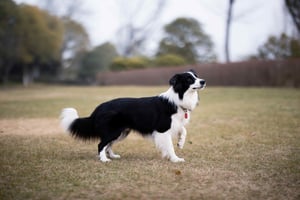Training a puppy not to bite is an important part of responsible pet ownership. It can be a...
The Best Way to Toilet Train a Puppy
Toilet training a puppy is a time-consuming process that requires patience, consistency and lots of positive reinforcement. This article will discuss the best way to toilet train a puppy, including the different methods available, the importance of understanding the puppy’s behaviour, the importance of having a routine and the importance of providing plenty of rewards.
Understanding the Puppy’s Behaviour
Before you begin toilet training your puppy, it’s important to understand their behaviour. Puppies have a natural instinct to not soil their bed or living area, so you can use this to your advantage. It’s also important to remember that puppies have small bladders and need to be taken out often to avoid accidents.
When taking your puppy out, it’s important to give them plenty of time to do their business. If they don’t go after a few minutes, it’s best to take them back inside and try again later. This helps to reinforce the idea that the outside is the designated toilet area.
Establishing a Routine
Establishing a routine is key to successful toilet training. Puppies need to learn that certain times of the day are designated for going to the toilet. This should include after meals, after naps, first thing in the morning and last thing at night. Taking your puppy out at the same time every day will help them to understand when it’s time to go.
When you take your puppy out, it’s important to stay with them until they go. This helps to reinforce the idea that the outside is the designated toilet area. When they do go, it’s important to reward them with praise and treats.
Using Positive Reinforcement
Positive reinforcement is an important part of toilet training. It’s important to reward your puppy when they go to the toilet in the right place. This can be done with verbal praise, physical affection or treats. It’s also important to avoid punishing your puppy if they have an accident. Punishment can cause your puppy to become fearful, which can make the toilet training process more difficult.
It’s also important to remember that puppies learn at different rates. Some may take a few days to understand the toilet training process, while others may take weeks or even months. It’s important to be patient and consistent throughout the process, as this will help your puppy learn more quickly.
Crate Training
Crate training is another method that can be used to help with toilet training. This involves confining your puppy to a small space, such as a crate, for short periods of time. This helps to prevent accidents in the house and can help puppies learn to hold their bladder for longer periods of time. It’s important to use the crate only for short periods of time and to make sure the puppy has access to food, water and a place to toilet.
When using crate training, it’s important to remember to take your puppy out often. This will help to reinforce the idea that the outside is the designated toilet area. It’s also important to reward your puppy when they go to the toilet in the right place.
Conclusion
Toilet training a puppy can be a challenging process, but it is possible with patience and consistency. The best way to toilet train a puppy is to understand their behaviour, establish a routine, use positive reinforcement and consider crate training. By following these steps, you can help your puppy learn to toilet in the right place and avoid accidents in the house.



